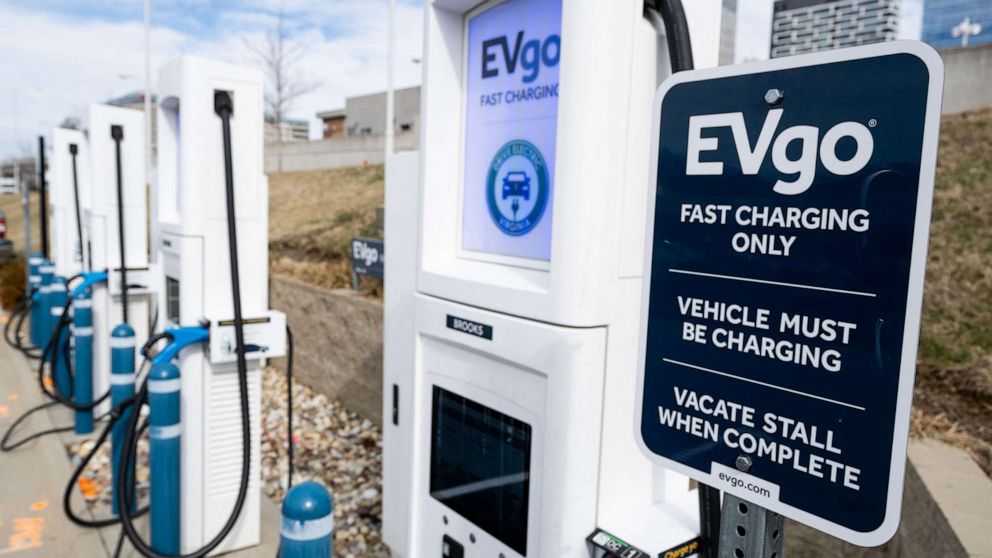Expert Opinions and Market Insights When You Buy EV Charging news
Expert Opinions and Market Insights When You Buy EV Charging news
Blog Article
Leading EV Charging News: Key Updates on Infrastructure and Advancement

Current Developments in Fast-Charging Modern Technology

Moreover, developments in battery technology, consisting of improved thermal administration systems and greater power density batteries, complement fast-charging capacities. These developments reduce the risk of battery deterioration throughout fast charging, making sure longevity and efficiency for EV proprietors.
In addition, the combination of wise billing remedies is enhancing customer experience, allowing real-time surveillance and vibrant pricing models. EV Charging news. This versatility permits vehicle drivers to optimize charging expenses and times based on grid demand
As car manufacturers proceed to purchase fast-charging networks, the partnership in between sector stakeholders is critical. Partnerships between billing station carriers and auto manufacturers are leading the way for considerable coverage, inevitably cultivating an extra durable EV ecological community. These innovations are crucial in supporting the shift to lasting transportation.
Federal Government Campaigns for Billing Development
Federal government initiatives play a crucial role in the expansion of electric car (EV) billing framework, assisting in the change to sustainable transport. Numerous federal and state programs are being implemented to enhance charging availability, reduce the financial problem on consumers, and advertise the adoption of electrical vehicles.
Notably, the U.S. government has actually designated significant financing via the Infrastructure Financial Investment and Jobs Act, which earmarks $7.5 billion for EV billing network growth throughout the country. This financing is aimed at releasing hundreds of brand-new billing stations, specifically in underserved locations, consequently attending to array anxiety among possible EV buyers.
Furthermore, many states are establishing regulations to enhance the permitting procedure for charging terminal installations, which is critical for accelerating release. Motivations such as tax obligation debts and rebates for both customers and services are also being introduced to motivate the setup of charging infrastructure.
Furthermore, public-private partnerships are increasingly coming to be an emphasis, leveraging private financial investment to enhance federal government financing. These initiatives highlight a joint method vital for developing a extensive and effective EV billing network, eventually contributing to a greener and more lasting future.
Innovative Battery Solutions Enhancing Effectiveness
Reinventing the landscape of electric vehicle (EV) modern technology, cutting-edge battery solutions are significantly boosting performance and efficiency. Developments in battery chemistry, particularly with lithium-sulfur and solid-state batteries, are bring about enhanced power thickness, which permits for longer arrays and faster billing times. These brand-new battery kinds have the potential to outperform traditional lithium-ion batteries by using higher capacities while reducing weight, consequently improving overall automobile effectiveness.
In addition, advancements in battery administration systems (BMS) are enhancing power usage and expanding battery lifespan. Intelligent algorithms monitor battery health and wellness and performance, allowing real-time adjustments to charging you could try this out and discharging processes. This not just enhances the performance of the battery yet likewise ensures a more dependable and sustainable energy resource for EVs.
Additionally, the assimilation of reusing technologies is addressing the environmental impact of battery production and disposal. Developments in second-life applications for EV batteries are facilitating their usage in power storage systems, adding to a round economic situation.
As these innovative battery remedies continue to progress, they assure to transform the EV market, making electric vehicles more enticing and easily accessible to a more comprehensive audience while sustaining international sustainability objectives.

Cooperation Between Automakers and Billing Networks
Acknowledging the important need for a durable charging infrastructure, car manufacturers are increasingly teaming up with charging network providers to enhance the EV ownership experience (EV Charging news). These partnerships intend to create a smooth charging community that profits customers and sustains the transition to electrical lorries
Major vehicle brand names are signing up with forces with established billing networks to broaden their charging station insurance coverage, ensuring motorists have accessibility to hassle-free and trustworthy billing options. For circumstances, collaborations with networks like ChargePoint and Electrify America allow automakers to integrate billing options directly into their Find Out More cars' navigation systems, guiding customers to the local stations and supplying real-time accessibility updates.
In addition, these cooperations often lead to the advancement of fast-charging innovations that considerably minimize the time needed to charge an EV. By pooling sources and experience, automakers and charging networks can innovate much faster, developing solutions that satisfy the expanding need for electrical mobility.
On top of that, joint campaigns might additionally bring about more standardized charging methods, which can minimize consumer confusion and advertise broader EV adoption. Overall, these tactical partnerships are pivotal in developing a reliable and user-friendly billing infrastructure that satisfies the requirements of an increasing electric automobile market.
Difficulties Facing EV Billing Infrastructure
As the electric lorry market proceeds to expand, numerous challenges sites are appearing that hinder the advancement of an extensive billing facilities. Among the main challenges is the insufficient variety of charging stations, especially in country and underserved city areas. This void develops variety anxiety among possible EV purchasers, discouraging them from making the switch.
Additionally, the absence of standardization accountable technology makes complex the facilities landscape. Variations in plug kinds and billing rates can develop complication for customers and raise functional intricacies for billing network drivers. The assimilation of charging stations into existing electrical grids postures substantial difficulties. Lots of regions face ability restrictions, calling for significant investments in grid upgrades to fit increased need.
One more pressing concern is the high expense connected with the installation and upkeep of billing terminals, which can be an obstacle for both exclusive services and public entities. Governing hurdles and zoning constraints can delay the release of charging framework, hampering progression in broadening essential solutions. Addressing these difficulties will be vital for promoting a durable EV community that supports the shift to lasting transportation.
Conclusion
In final thought, the ongoing improvements in EV billing technology, supported by considerable federal government campaigns and innovative battery services, are crucial for the development and efficiency of electrical vehicle infrastructure. Partnerships between automakers and billing providers even more boost terminal insurance coverage, addressing the growing demand for accessible charging options. Despite difficulties that continue within the EV charging landscape, these advancements symbolize a positive trajectory towards a much more sustainable and efficient electrical automobile ecological community.
Innovations in charging infrastructure have actually led to the growth of ultra-fast battery chargers qualified of supplying up to 350 kW of power, dramatically minimizing billing times. Variations in plug types and billing rates can produce confusion for users and increase functional intricacies for charging network operators.In verdict, the recurring improvements in EV billing innovation, supported by significant federal government campaigns and ingenious battery solutions, are crucial for the development and effectiveness of electric lorry infrastructure. Cooperations between automakers and billing suppliers even more enhance station insurance coverage, attending to the expanding demand for accessible billing options. Regardless of challenges that linger within the EV charging landscape, these developments indicate a positive trajectory in the direction of a much more efficient and sustainable electrical car community.
Report this page